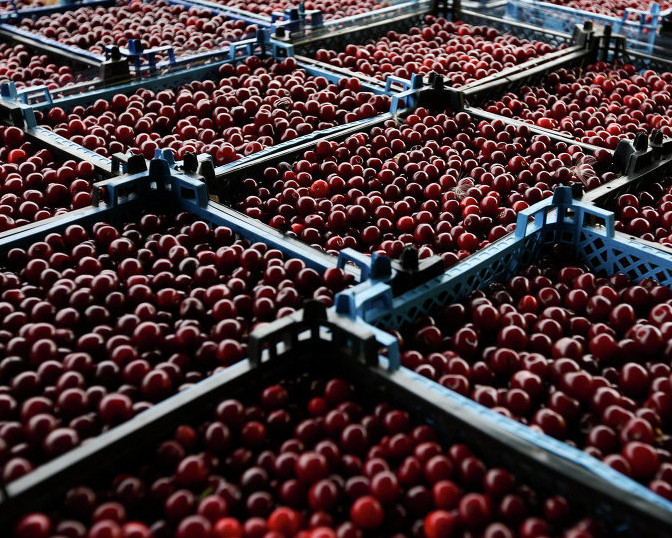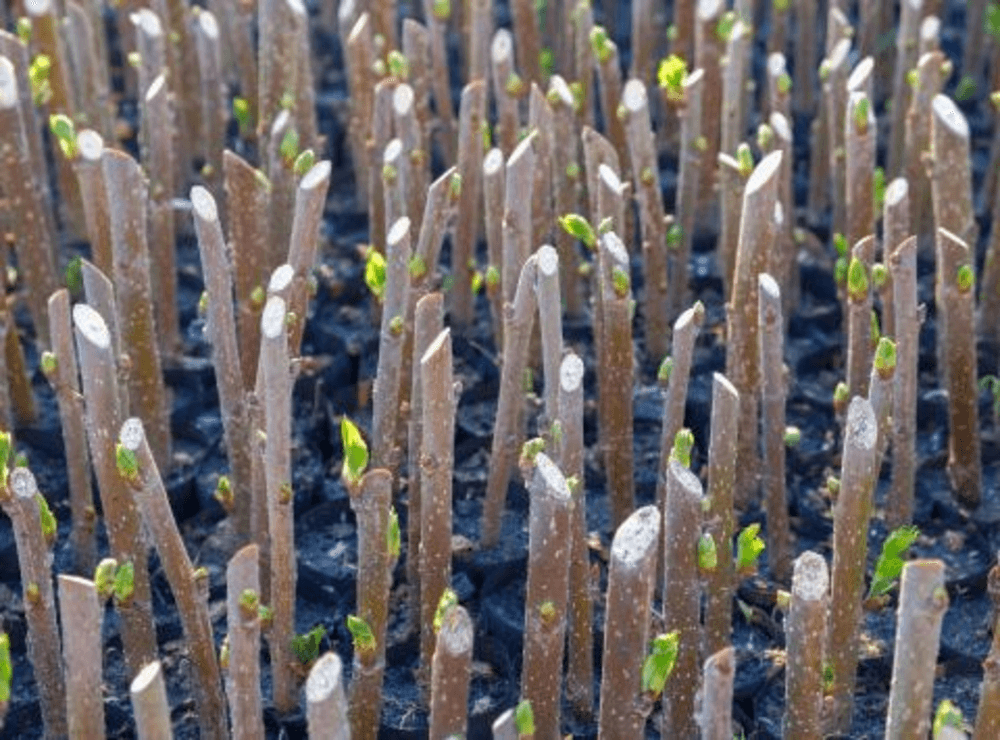Since the official confirmation of the presence of Drosophila suzukii in France in 2010, this fruit fly has represented a serious problem for cherry producers and seriously threatens the sustainability of the industry. Population levels continue to rise and cause severe economic damage to farms.
The arrival of this invasive pest has led to an increase in insecticide treatments on cherry trees, a crop previously treated very little. In just a few years, the number of insecticide applications on fruit went from one targeted treatment against Rhagoletis cerasi, the European cherry fruit fly, to three to five treatments.
While pesticides are the subject of research aimed at reducing their use, other practices are being studied to ensure an integrated pest management program. Long-term research is underway on the use of other methods such as mass trapping, orchard hygiene, biocontrol products, landscape management, etc.
Among the alternative methods studied, netting currently shows the best results and the greatest potential. Although this approach, which requires high investment and significant labor, is not the easiest to implement in existing orchards, it could offer growers an alternative to pesticides.
Trial on vase-shaped orchards
This physical barrier is more suited to espalier orchards, for which evaluations have proven promising. However, in France most orchards are managed in a vase-shaped system. Therefore, in 2017, a trial was launched at the CTIFL La Tapy station (former experimental station La Tapy).
It involved the installation of an insect-proof net cover on an already existing vase-shaped orchard. The main objective is to assess technical feasibility, while also verifying its effectiveness and possible consequences on tree production and fruit quality: average weight and side effects related to diseases.
Technical presentation
The trial is conducted on vase-shaped trees of two varieties: Summit, a mid-season variety harvested during the first 10 days of June on average, and Belge, a late variety harvested 7–10 days after Summit. Each variety is planted in a full row alternated across the plot.
The variable studied is the use of nets to protect cherry trees. The trial includes three treatments: a net installed on a single plot, a net on a single row, and an uncovered control. On each row, five elementary plots of 3 trees are identified to provide replications for data collection.
In 2017, before the structures were installed, the trees were topped to reduce their size. This exceptional pruning was performed uniformly by hand on all trees in the experimental orchard.
The single-plot modality consists of 7 rows of cherries under netting (0.42 ha), of which only the two rows corresponding to the two trial varieties were observed. The chosen cover is mixed: a plastic sheet installed on the ridge to protect the trees from rain, and above this sheet, nets covering the whole and extending down along the sides of the single plot.
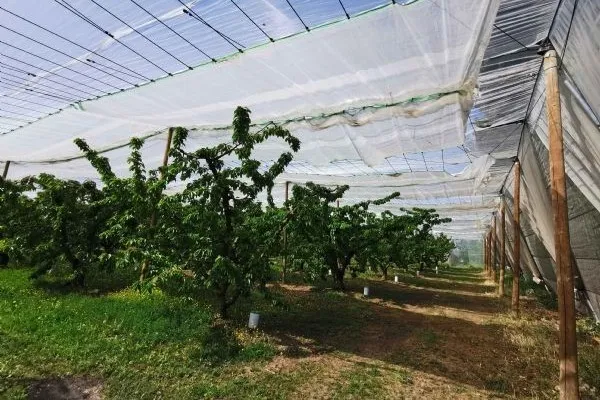 Figure 1: Single-plot model with plastic sheets under insect-proof netting
Figure 1: Single-plot model with plastic sheets under insect-proof netting
Covering methods and control
The nets are closed after flowering. The chosen net (filPack 6×6) is impenetrable to flies. In fact, its mesh size of 1.38 × 1.38 mm prevents the passage of D. suzukii, whose size ranges from 2.6 to 3.4 mm.
The single-row modality consists of one row of Summit cherries and one row of Belge cherries. Each row is covered by a set of two independent nets that are closed together at the ridge, allowing access to the top of the vase-shaped trees.
Every two trees, three posts are installed: a central post flanked by two oblique posts arranged in a V-shape. The nets are attached at the top to the oblique posts, then rolled out toward the ridge, where they are tied, and toward the ground, where they are secured by a rigid tube.
The inclined wires, which stiffen the structure by connecting the 3 posts, as well as the transverse wires (Deltex or iron wire), allow guiding the net so that it does not snag on branches. The upper part of the net extends on each side and is attached to cables at the top to ensure the system’s tightness.
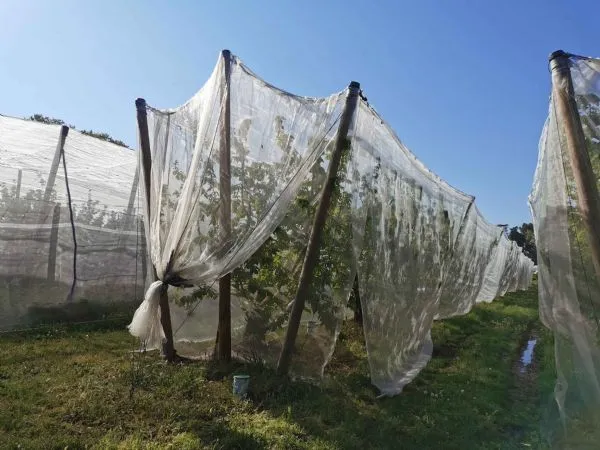 Figure 2: Single-row system
Figure 2: Single-row system
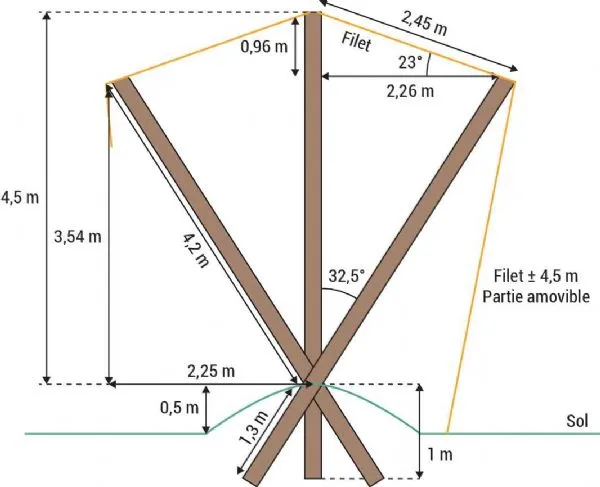 Figure 3: Design plan of single-row netting
Figure 3: Design plan of single-row netting
Effectiveness of the structures
Finally, the side nets can be closed with a system of cranks positioned at the center, to maintain a distance of about 1.5 m on each side of the trunk. At installation, special attention was paid to the wind resistance of the net, but also to the tightness at the intermediate folding junctions. It has not been necessary to reinforce the structure since its installation.
The control is also made up of one row of Summit cherries and one row of Belge cherries. It is not covered with either a sheet or netting.
The trial evolved technically over time. In the first four years, between 2017 and 2020, all treatments followed the same plant protection schedule. Since 2021, the number of phytosanitary treatments targeting D. suzukii has been reduced to a single application for the netted modalities.
This single treatment is maintained to ensure quality protection against the pest. In fact, the experimental plot is located next to a hedge which, combined with high seasonal residual humidity, represents ideal conditions for the flight of this fly.
 Figure 4: Average rate of fruit stung by Drosophila suzukii when all treatments are maintained under netting. Data not significant at the 5% threshold; Kruskal-Wallis
Figure 4: Average rate of fruit stung by Drosophila suzukii when all treatments are maintained under netting. Data not significant at the 5% threshold; Kruskal-Wallis
 Figure 5: Average rate of fruit stung by Drosophila suzukii when treatments are reduced under netting. Data not significant at the 5% threshold; Kruskal-Wallis
Figure 5: Average rate of fruit stung by Drosophila suzukii when treatments are reduced under netting. Data not significant at the 5% threshold; Kruskal-Wallis
Results and data collected
Monitoring shows an overall higher population compared to other plots of the station. For this reason, the application of an insecticide at the closing of the nets is maintained to “sanitize” the treatments.
Over the eight years of the trial, on the uncovered control it is difficult to characterize a “standard” pest control strategy against D. suzukii. This has been adapted according to changes in regulations, attempting to alternate chemical families as much as possible.
For example, in 2024, due to the limited number of authorized products available for D. suzukii, protection consisted of an alternation between Karaté Zéon© (lambda-cyhalothrin) and Exirel© (cyantraniliprole).
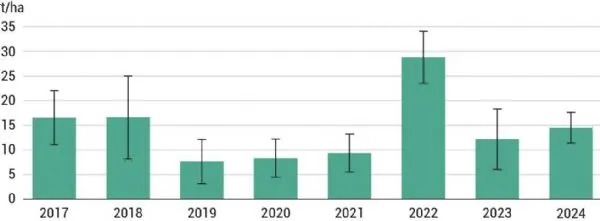 Figure 6: Yield not impacted by pruning of trees during the eight years of trial – Annual production in t/ha
Figure 6: Yield not impacted by pruning of trees during the eight years of trial – Annual production in t/ha
Results differ between the two varieties, since D. suzukii pressure varies during the season depending on harvest time: on average, pressure is higher on the Summit variety compared to Belge.
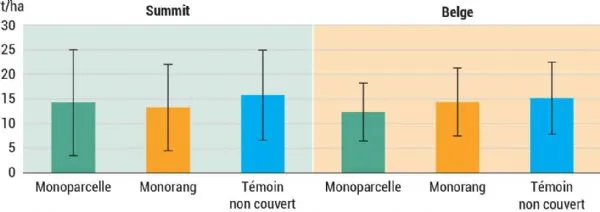 Figure 7: Similar yields across all modalities. Data not significant at 5% level; Kruskal-Wallis; p-value = 0.434 for Summit and 0.145 for Belge.
Figure 7: Similar yields across all modalities. Data not significant at 5% level; Kruskal-Wallis; p-value = 0.434 for Summit and 0.145 for Belge.
Yields and harvest quality
Both in the first four years of the trial and in the following four, the conclusions are identical: damage rates attributable to D. suzukii are low and statistically similar across all tested modalities. The trial therefore demonstrates that maintaining all insecticide treatments against the fly in netted modalities does not provide additional protection.
It should be noted that damage from R. cerasi was also monitored. However, this fly was not present in the experimental plot, so results are not presented due to an anecdotal level of damage.
Despite tree topping, yields remained similar to the orchard’s performance. In fact, the removal of the upper part of the branches allowed light to penetrate into the center of the tree canopy.
In response, new fruiting branches regrew from the tree centers to rebalance the structure, and yields increased again. The impact of canopy reduction is minor as it was carried out manually and not with a mechanical blade.
 Figure 8: Stable majority fruit size across modalities
Figure 8: Stable majority fruit size across modalities
Analysis of production data
The operator’s experience allowed a reasoned removal of branches, minimizing penalties on the orchard. A drop in yields was observed between 2019 and 2021 due to poor fruit set and a severe frost on the plot.
In 2022, conversely, yields were very high but associated with a reduced fruit size of 26–28 mm, less marketable.
Average yields over eight years show no statistical differences between modalities, for both Summit and Belge. Values range between 13.3 t/ha and 15.8 t/ha for Summit and between 12.4 t/ha and 15.2 t/ha for Belge.
Installation of nets therefore has no impact on orchard production levels. The high variability of the data is explained by climatic conditions and alternate productivity of the studied varieties.
Quality and work management
With regard to fruit quality, numerous parameters were observed. The predominant fruit size is 28–30 mm for both Belge and Summit, considering the eight years of the trial.
As temperature increases under nets, it was assumed that the rate of double fruits would rise. In practice, this defect did not appear significantly between 2017 and 2024. However, it must be considered that the two evaluated varieties are not particularly sensitive to this phenomenon.
Similarly, the dominant color (according to the CTIFL color code) was not affected by the nets. Summit is harvested at color 4 and Belge, always slightly darker, at color 5.
No difference was observed in the timing of reaching these color stages. Sugar and acidity levels measured in fruit showed no differences between the three modalities.
Qualitative differences and labor time
The main difference observed between modalities concerns the rate of rotten fruit at harvest. For both Summit and Belge, the monilia rate is lower in the single-plot modality. The single-row modality behaves like the uncovered control.
The difference is therefore related to the covering sheet of the single-plot modality. Cracked fruits did not show significant differences between modalities, although the sheet could have had a positive effect on this type of damage.
Again, the low sensitivity of the varieties to the phenomenon influenced the results obtained.
From a labor standpoint, excluding net handling, harvesting times are not affected. On average, 906 h/ha are required for all modalities.
The most significant time cost relates, predictably, to nets and their handling. Overall, annually, between 60 and 70 h/ha must be planned depending on the structure type to lower and raise the nets.
These times correspond to the intervention of a team of 2–4 experienced people equipped with a lifting platform. Under production conditions, such labor times may be higher depending on available equipment and team training levels.
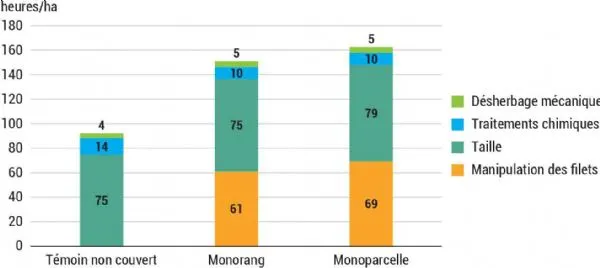 Figure 9: Nets that increase labor investment
Figure 9: Nets that increase labor investment
The trial shows that the installation of insect-proof nets can be achieved on a vase-shaped cherry orchard, without impacts on yield quantity or fruit quality. However, these installations have a high cost.
Their application on high-density orchards (espalier) is more quickly amortized, thanks to faster fruiting and higher production per hectare.
Opening image credit: Aliénor ROYER-LANOOTE , CTIFL
Aliénor ROYER-LANOOTE
CTIFL
Cherry Times - All rights reserved














